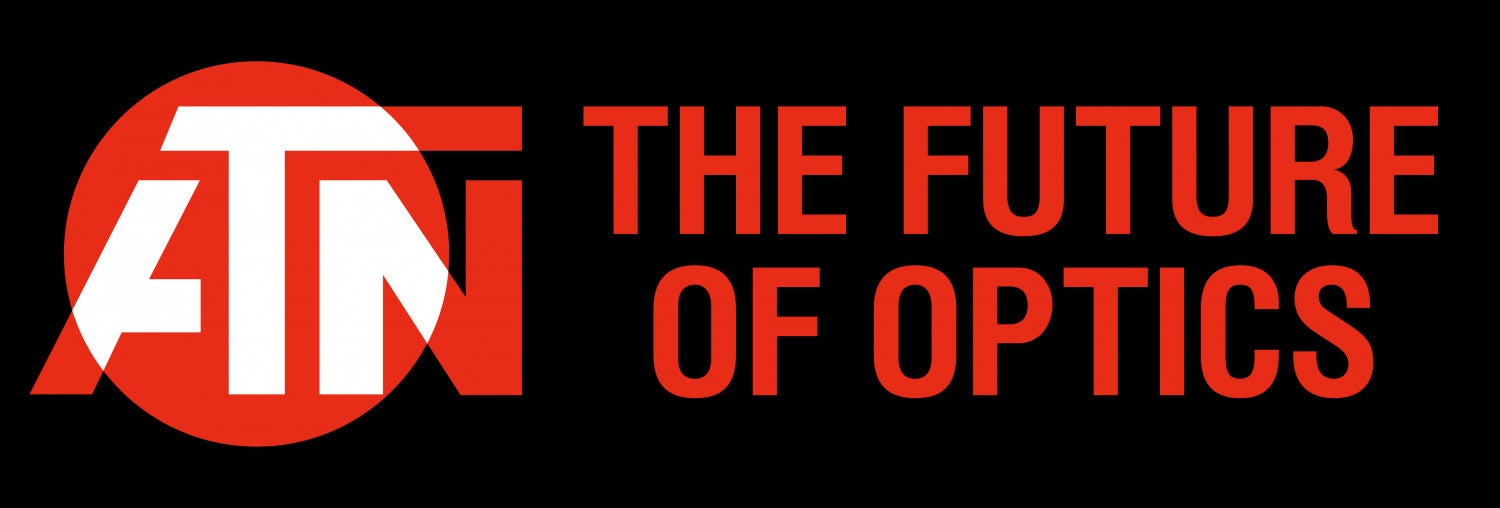Back again with Friday Night Lights. We are sponsored by ATN Corp, manufacturers of night vision and thermal optics like the THOR LT. As with all of our sponsored series, Friday Night Lights will continue to bring you unbiased news and reviews from a variety of companies. In this week’s edition of FNL, I will go over a few upgrades that may interest you in saving weight for your night vision. Remember that old adage “Ounces equals pounds and pounds equals pain”.
Night Vision @ TFB:
- Friday Night Lights: Hollywood Night Vision Myths – Without Remorse
- Photonis Announces New PD-PRO Night Vision, Including Quads
- Friday Night Lights: ATN NVM14 – Entry Level Night Vision Monocular
- Senop To Supply Night Vision To The Finnish Armed Forces
Saving Weight From Your Neck

Photo from Pinterest
With head born night vision systems some complain about their neck. Our burden is small compared to these women carrying food and water for miles on end all on their heads. However, saving some ounces can help.
This is one of the reasons why the PVS-31A is so sought after. It has a system weight of under a pound. Most dual tube systems weigh around 20 ounces. So that means you need even more counterweight to help balance the load on your helmet.
One way to strip some weight is to change the power supply on your PVS-14. I had mentioned this a bit earlier in my review of the Panobridge. Nightline has a new digital power supply called the NL914C. It is lighter than your standard single AA PVS-14 power supply. A regular single AA Carson Industries PVS-14 power supply weighs 72g or 2.54oz.

Nightline makes an upgrade power supply that only weighs 45g or 1.58 oz. So you save 0.95 ounces. Almost one ounce.

What is the secret to saving weight? Get rid of antiquated things you do not need. The rotary on switch for the PVS-14 power supply is rather big and heavy. Nightline went with digital buttons instead for their NL914C. They also deleted the manual gain potentiometer knob for a +&- pair of buttons.
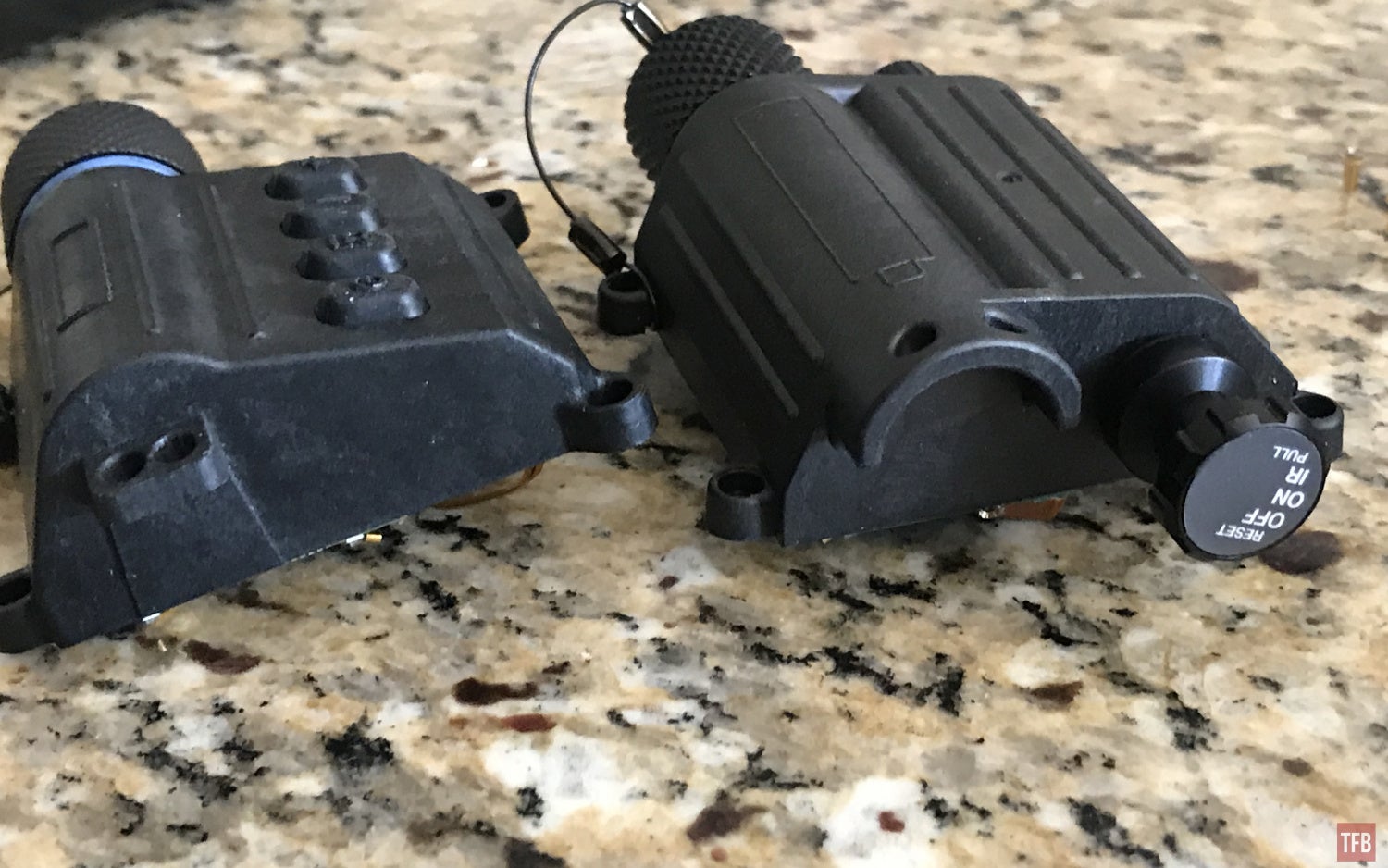
Instead of pulling the power switch out and turning it to activate the onboard IR illuminator, you just press the IR button.

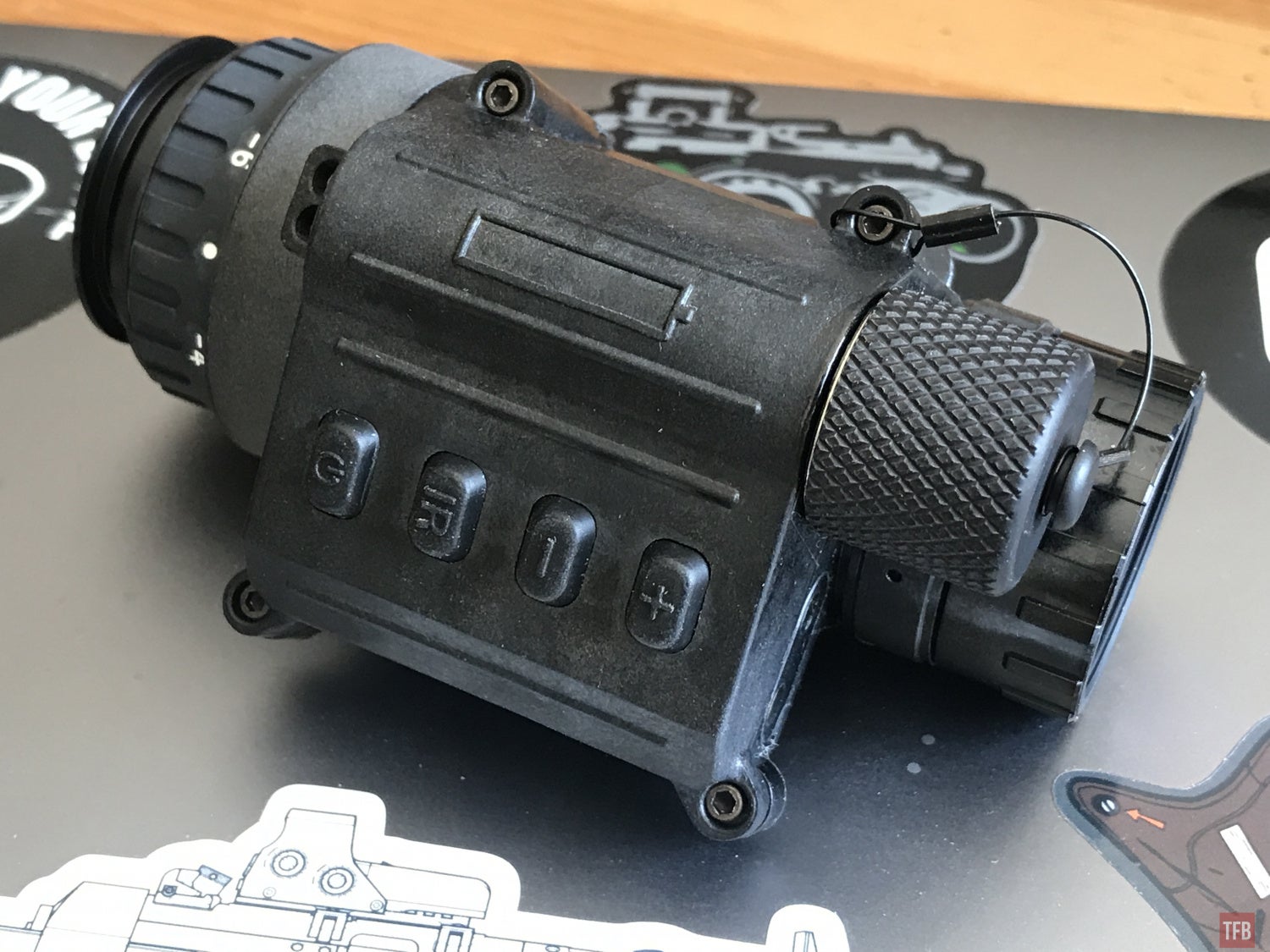



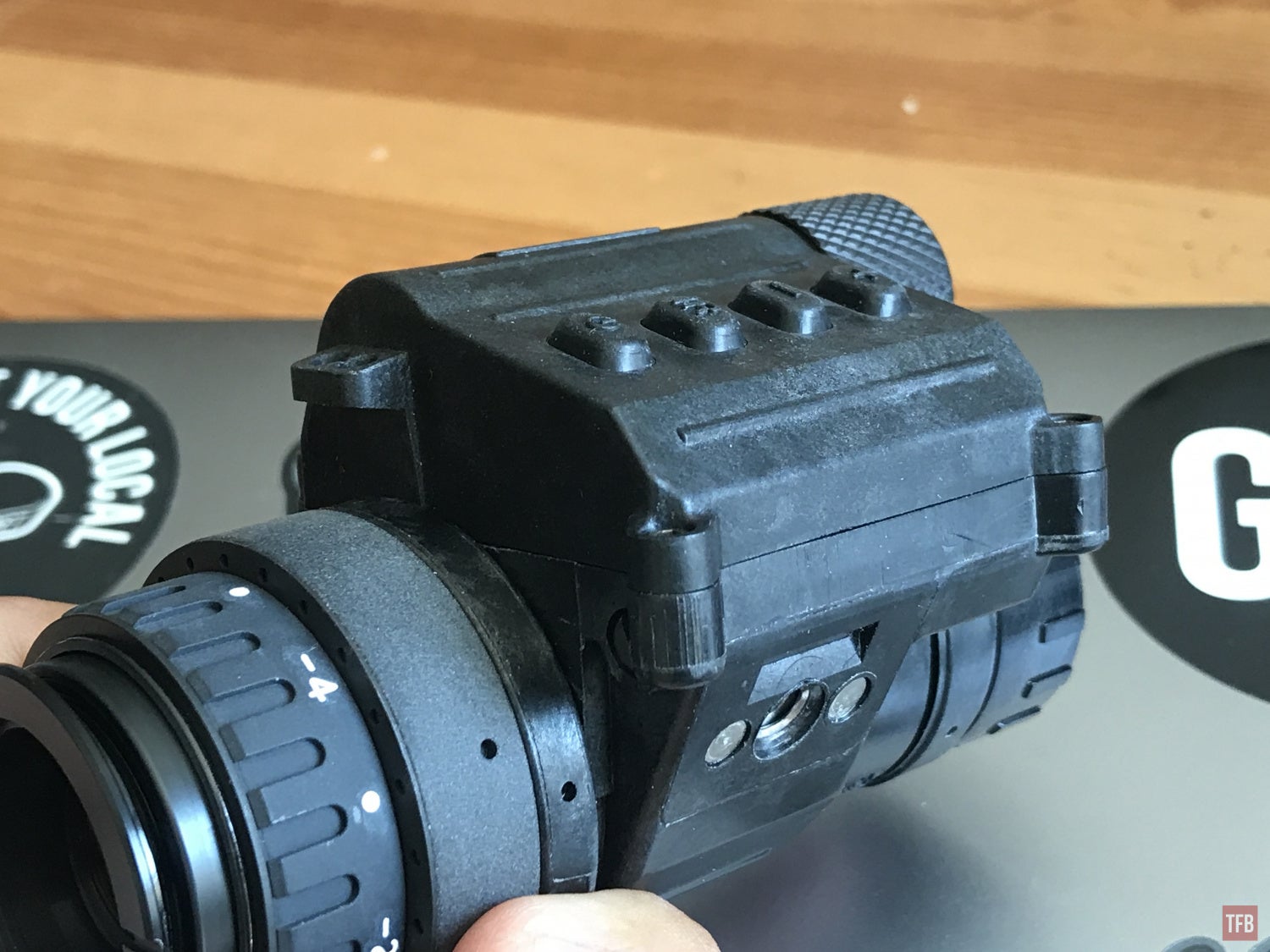
Another added bonus to the Nightline NL914C is that it is dual fuel. You can use a single AA or a CR123 to power your PVS-14. There are other night vision devices that have this flexibility but it requires some sort of adapter to use either power source. The MUM-14 can use a CR123 but if you want to use a single AA you need an extension for the battery tube. The NVG-50 housing from AGM has a battery cap that has a contact inside that can be removed, flipped around to accommodate the battery of choice. It is like a small thimble inside. Flip it around to access a AA or invert it to use it with CR123. It also achieves this without needing to change anything on the PVS-14. Inside the NL914C battery tube is a small lever. When you insert a AA battery, nothing remarkable happens, it just goes into the tube. With CR-123 the battery tube lever acts as a shelf so the CR123 does not retract too far into the chamber so it can power the PVS-14.

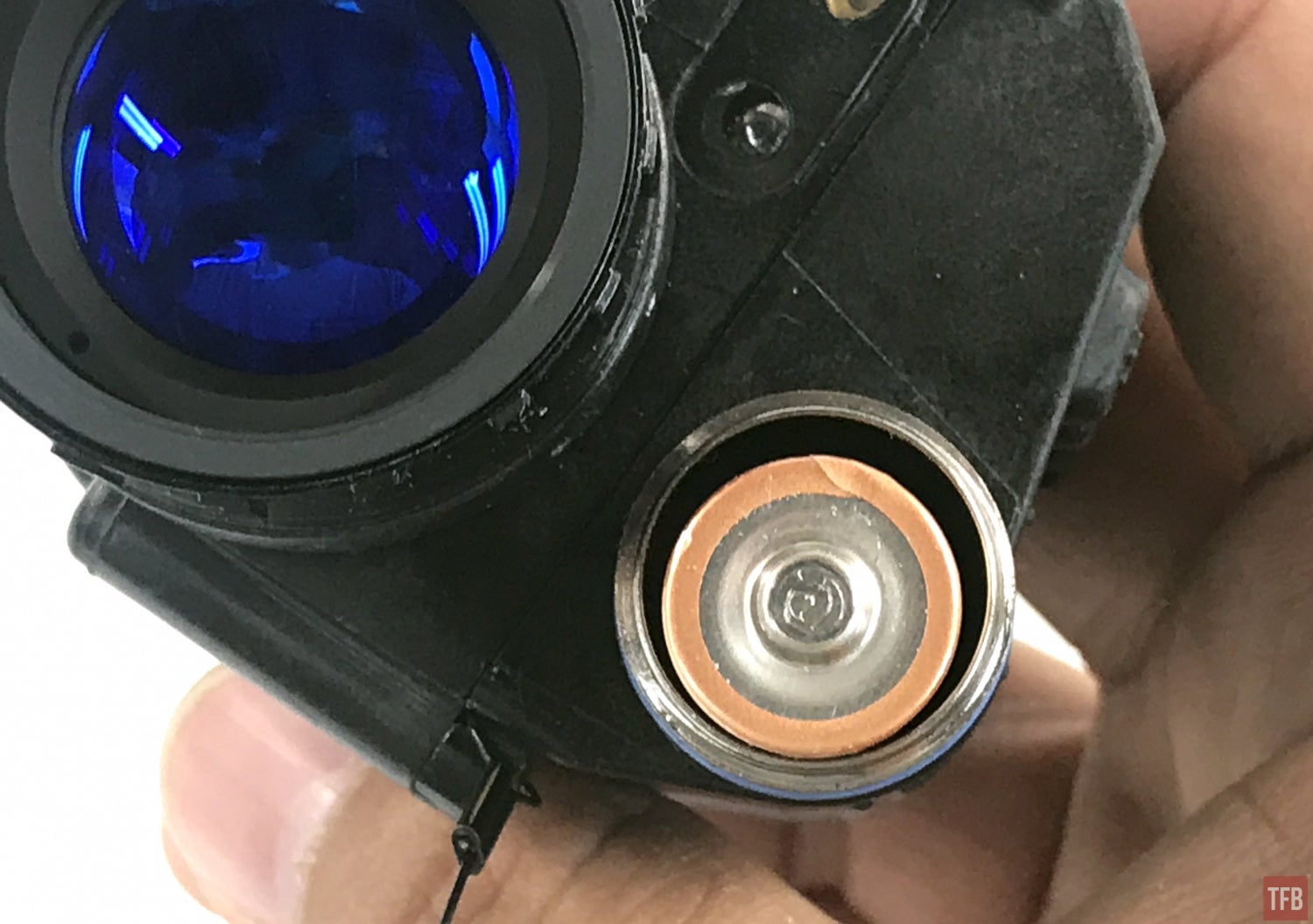

Weight savings of the NL914C on a built PVS-14.

Here is a PVS-14 with Carson single AA battery housing. The wrap does not weigh that much.
No surprise you save one ounce with the Nightline NL914C.

Another consideration for weight savings is the battery you use. Lithium batteries weigh less than alkaline batteries. You save 0.2 ounces using a lithium CR123. If you went with a lithium AA they only weigh 0.53 ounces compared to the 0.59 ounces that a CR123 weighs. Compare that to an alkaline AA which weighs 0.81 ounces. There is more going on in the two photos below to saving weight which I will discuss later in this article.

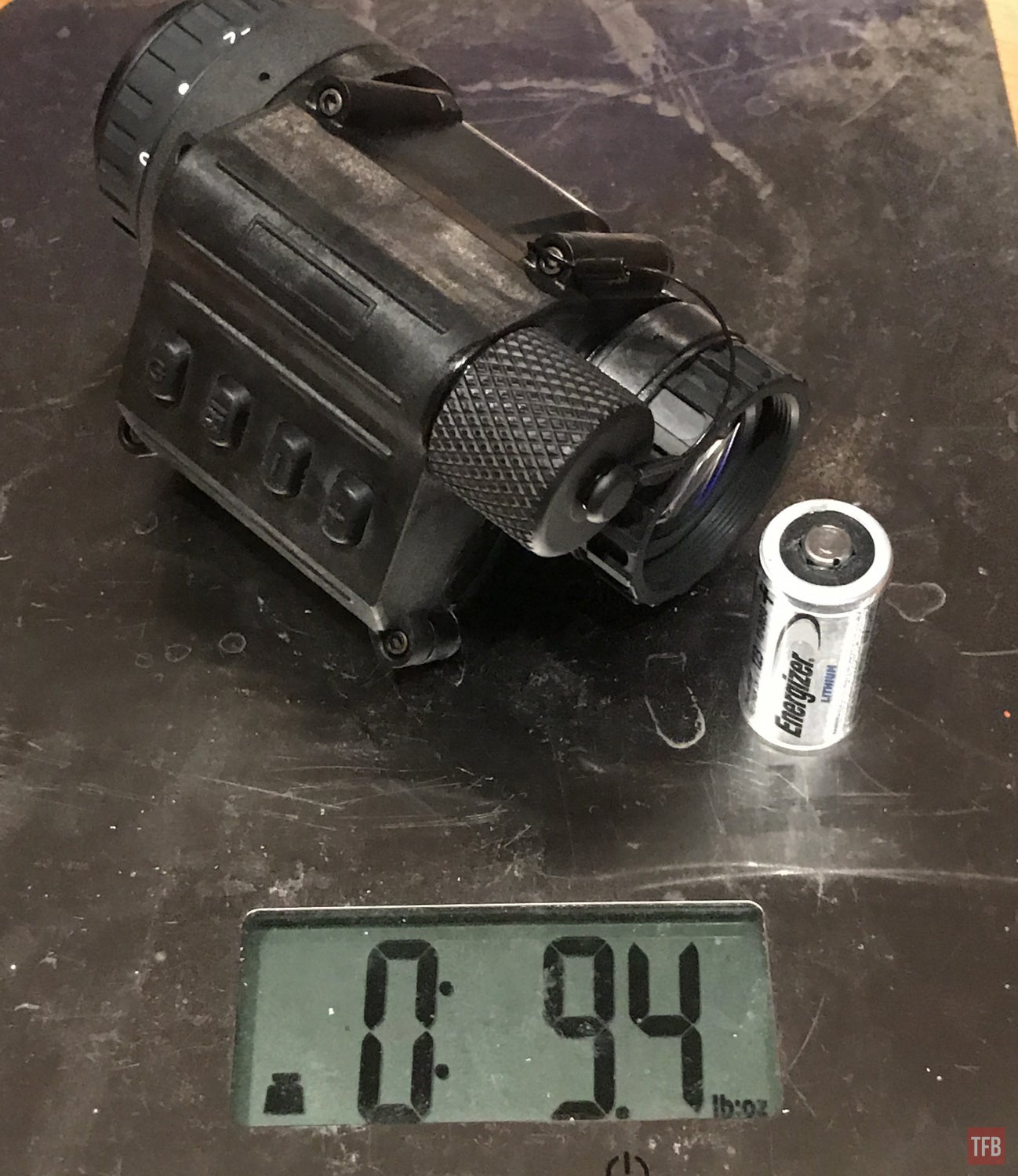
Another major benefit to the CR123 battery versus a AA battery is the run time on the Nightline NL914C. Allegedly you get 70 hours of run time when you use a CR123. Normal single AA PVS-14s run for 40 hours on a AA battery.
Saving Weight With Other Monoculars

In the Panobridge article, I teased this lightweight monocular option. It is a BNVD-1431 pod that has been removed from the 1431 bridge and a custom power supply has been bolted on to convert it into a standalone monocular.
The 716 battery pack was designed and made by Neo Wang in China. It has two simple buttons for power and the onboard IR illuminator.

The two loops on either side of the 716 marking are for tethering a lanyard.

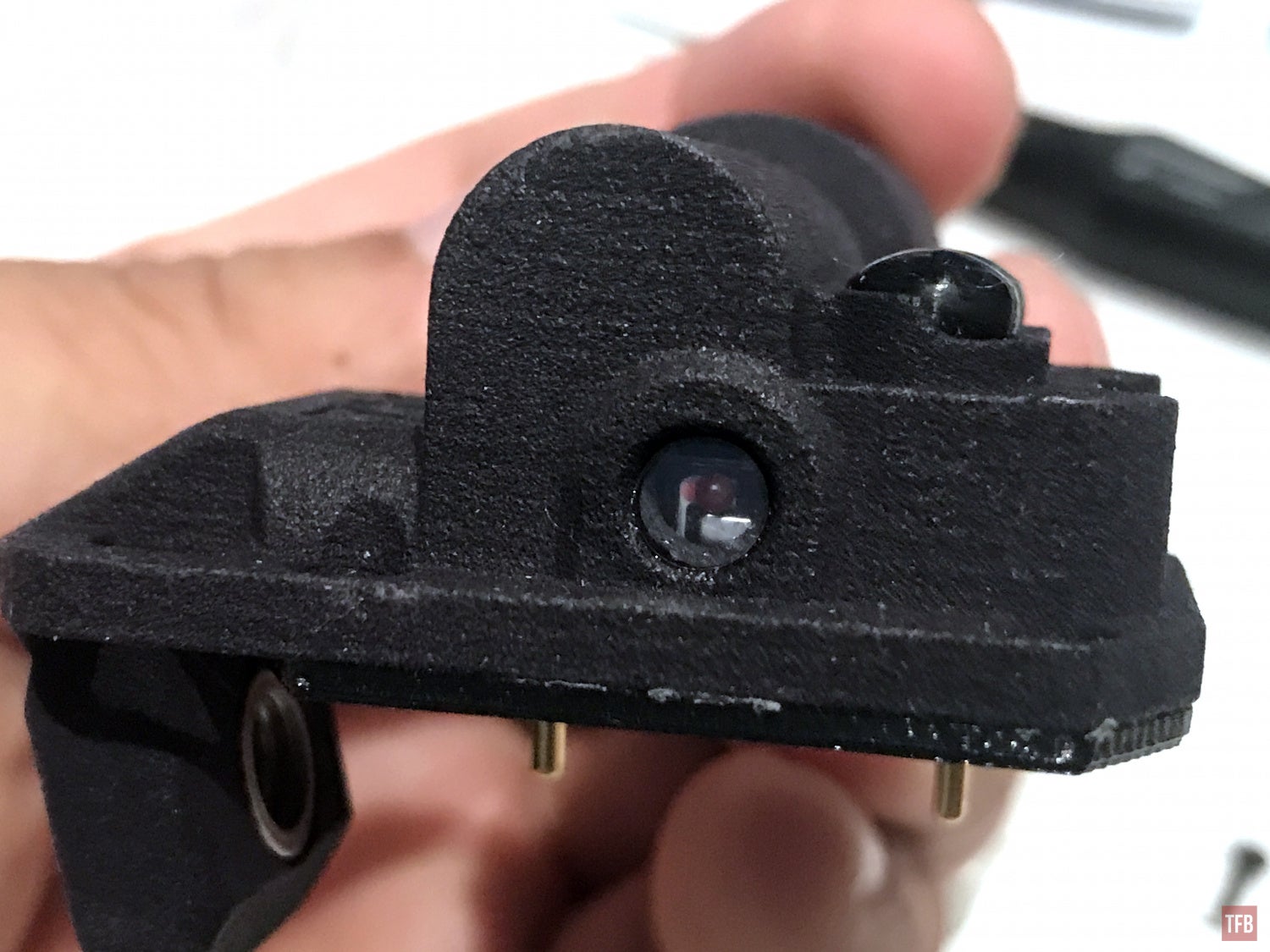
Onboard IR illuminator
One thing the 716 battery pack lacks is a manual gain adjustment.

Pogo stick pins for delivering power to the image intensifier. The 716 battery pack also has a 1/4-20 screw hole for mounting a J-ARM for single monocular use.
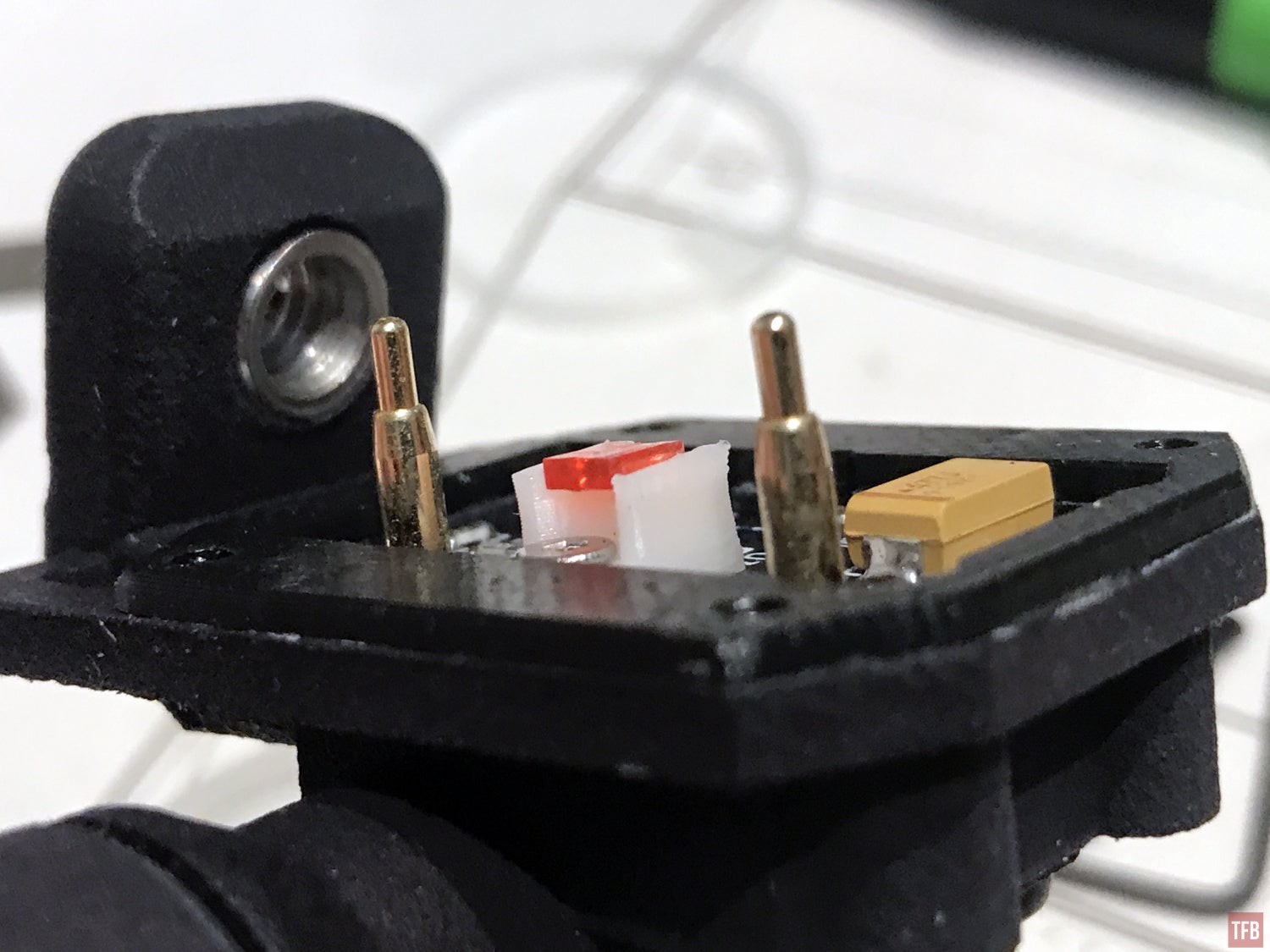
The 716 battery pack comes shipped with a 3D-printed protective cover that is screwed on.

You can use them to cover up the contacts on your 1431 bridge when you are not using it.
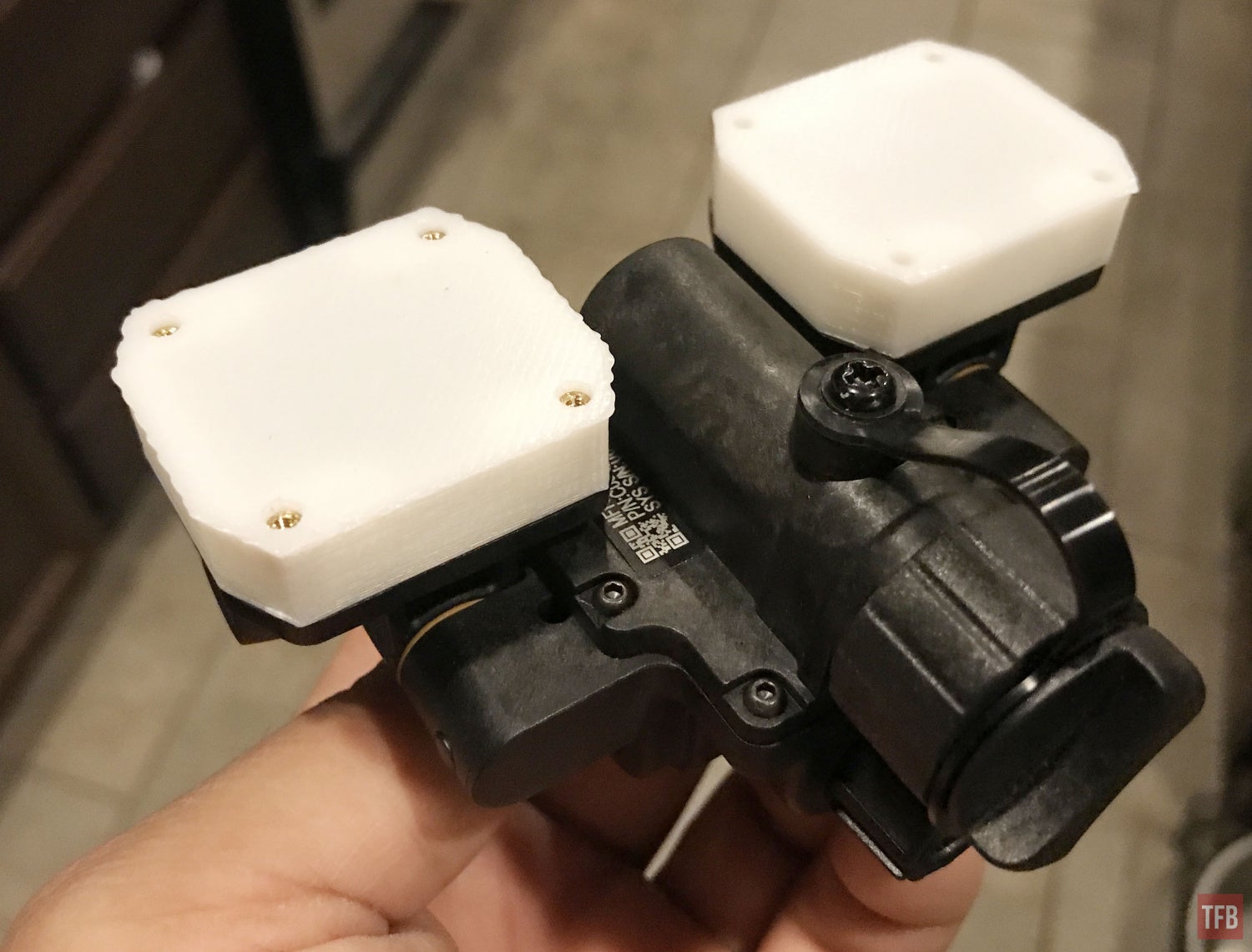
What does the 716 battery pack get you for saving weight? Quite a lot actually. With a regular 1431 monocular pod using Carson mil-spec optics, a fully built monocular with 716 battery pack weighs just 9.3 ounces.

Saving weight can be achieved with the next upgrade – RPO lightweight lenses. Swap them into the 1431 monocular pod and you have a fully built system at just 7.8 ounces.
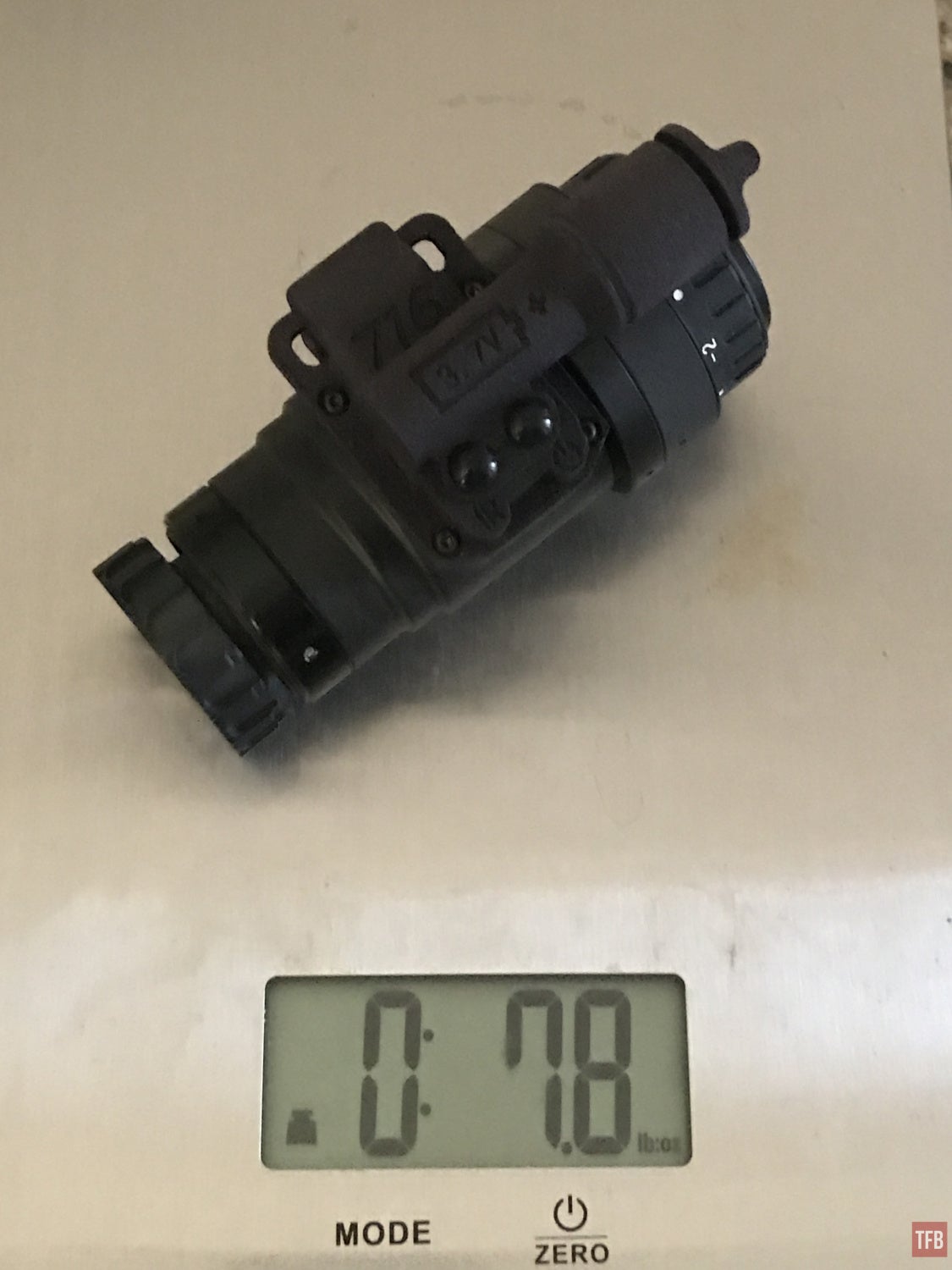
If you combine that with the Noisefighters X14 arm, you have a monocular that weighs just 8.5 ounces.

Of course, there are always compromises to saving weight. The 716 battery pack is powered by a 3.7v li-ion, not just any li-ion. It uses a 10440 which is AAA sized. It is very lightweight at just 0.33 ounces. The drawback is the capacity is very small – just 350 mAh.
RPO Light Weight Lenses
Recently the night vision world has been a buzz over saving weight with these lenses. Remember the UANVB? The one I built was 19.47 ounces. Well if you remove the metal eyecup retaining rings and switch out the infinity focus stop rings for Ultem and use the RPO lightweight lenses, you’ll get a fully built UANVB at just 15.4 ounces. That is some saving weight gains. This UANVB is now similar in weight to a PVS-31A.
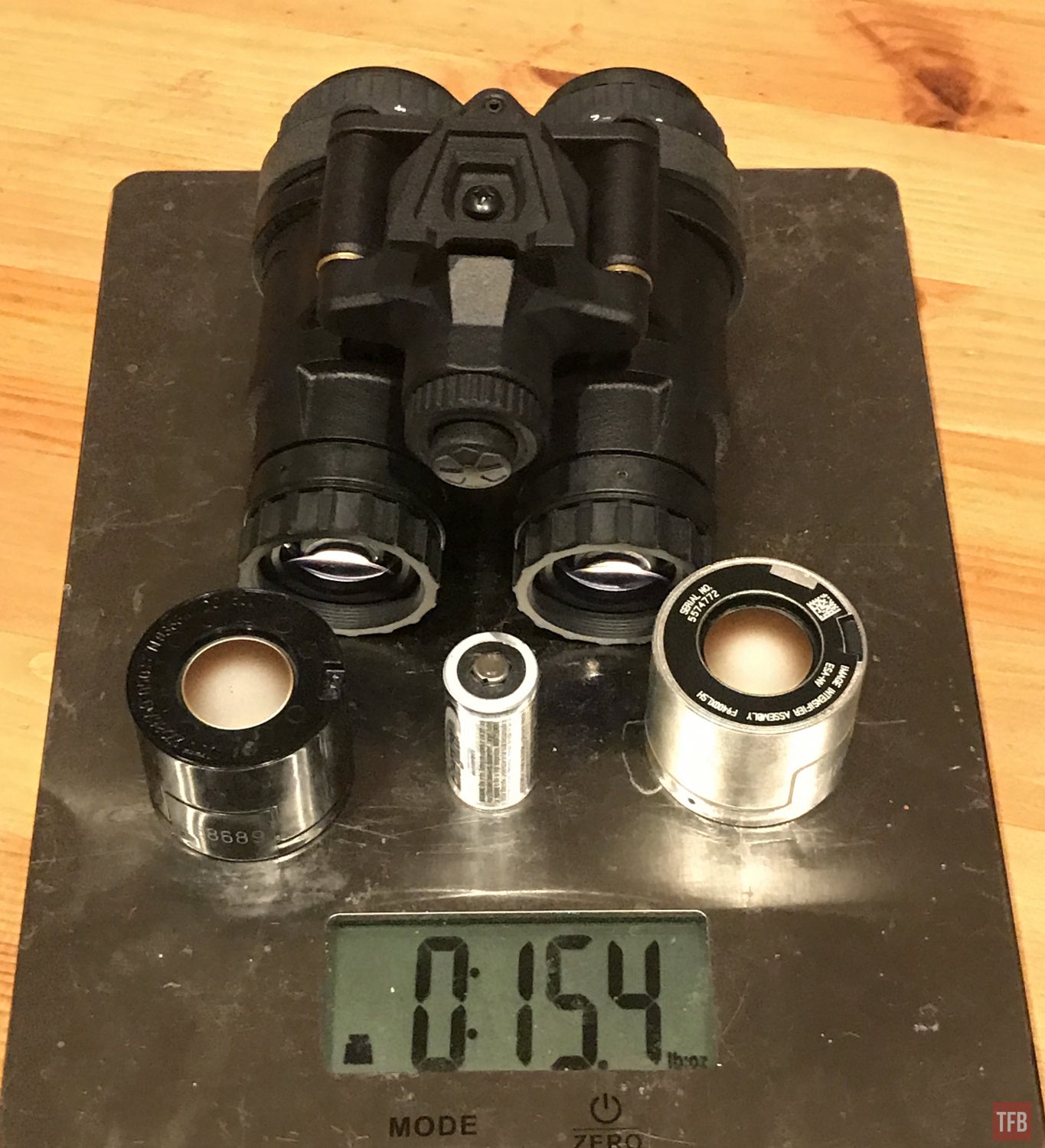
Like any way of saving weight, there are compromises. The RPO lightweight lenses cost a lot more than your run of the mill mil-spec PVS-14 optics. These cost about double of a set of Carson Industries optics and they are not complete. They come from Rochester Precision Optics (RPO) without o-rings and the eyepiece does to have the outer housing. So you need to use another set of eyepieces to complete them.

The swap is easy. You just turn the diopter on the eyepiece so the lens cell moves forwards and out. Then you install the RPO lens cell.
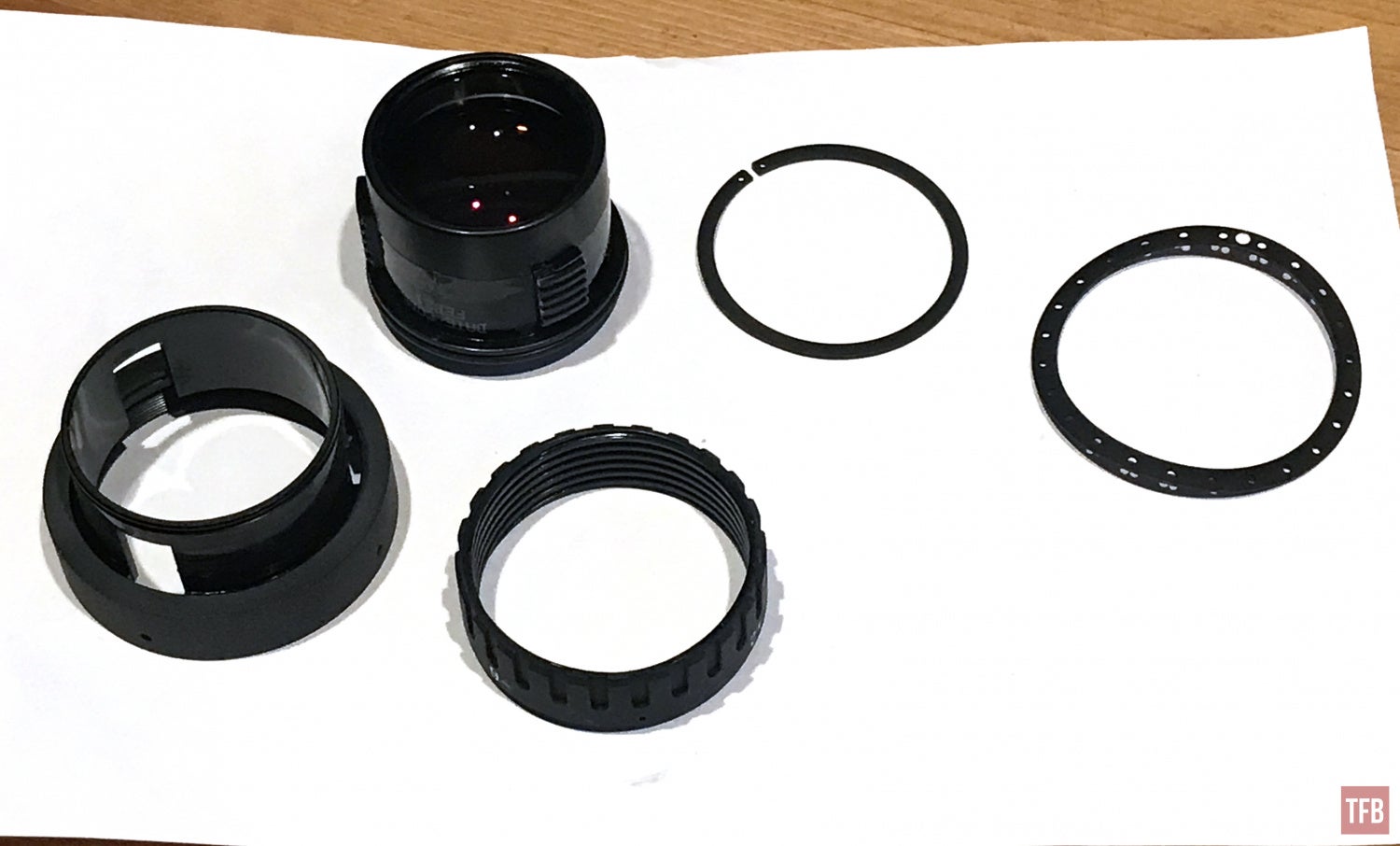
Here is an eyepiece disassembled. You don’t need to do this. Just unscrew the lens cell and install the RPO lens cell.
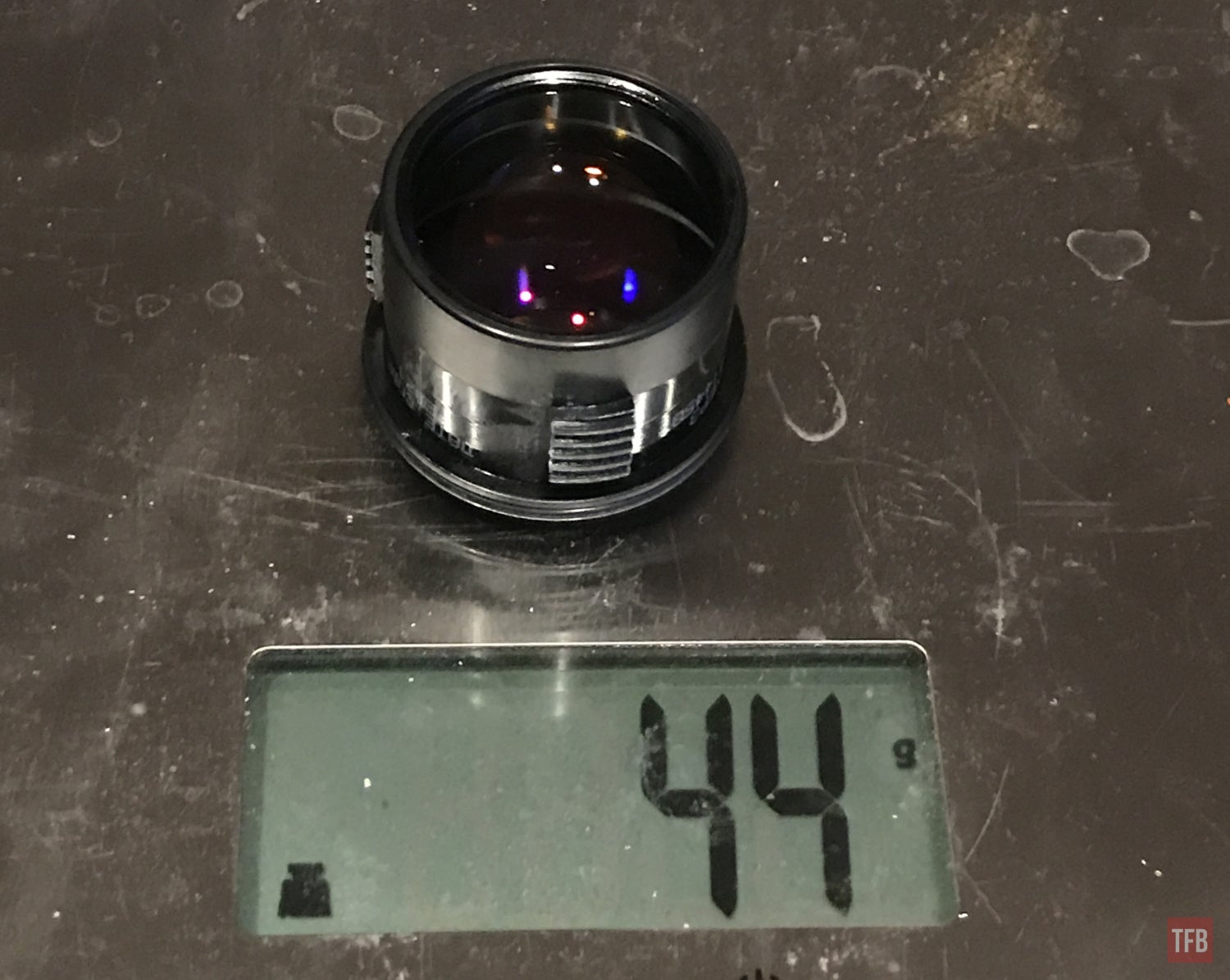
Carson eyepiece lens cell weighs 1.55 oz.

RPO eyepiece lens cell weighs 1.12 oz.
The RPO objective lenses save weight as well. Interestingly, the exit aperture of the RPO objective is wider than regular mil-spec objective lenses. I don’t know if this lets in more light but it doesn’t hurt.

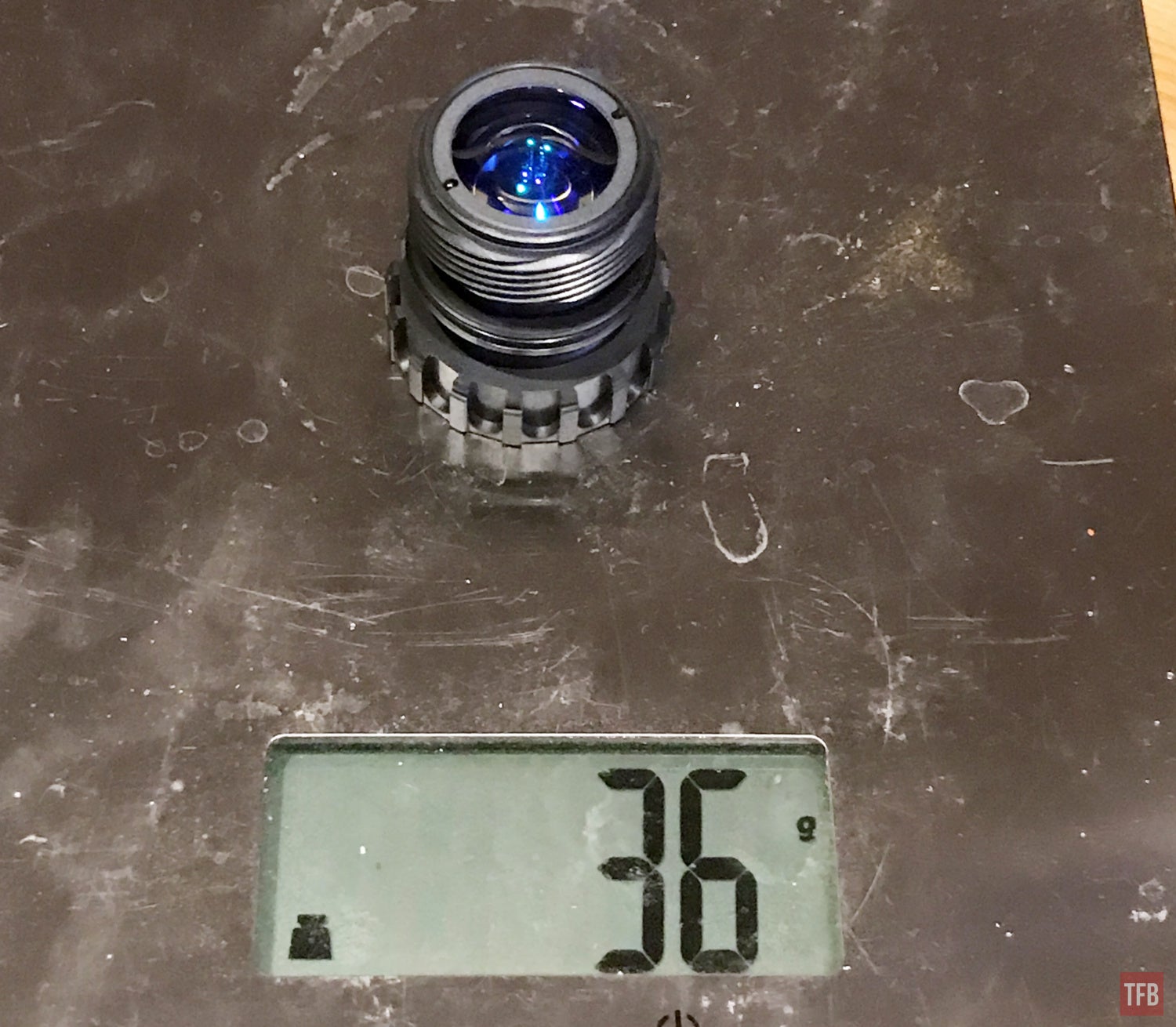
1.27 oz.
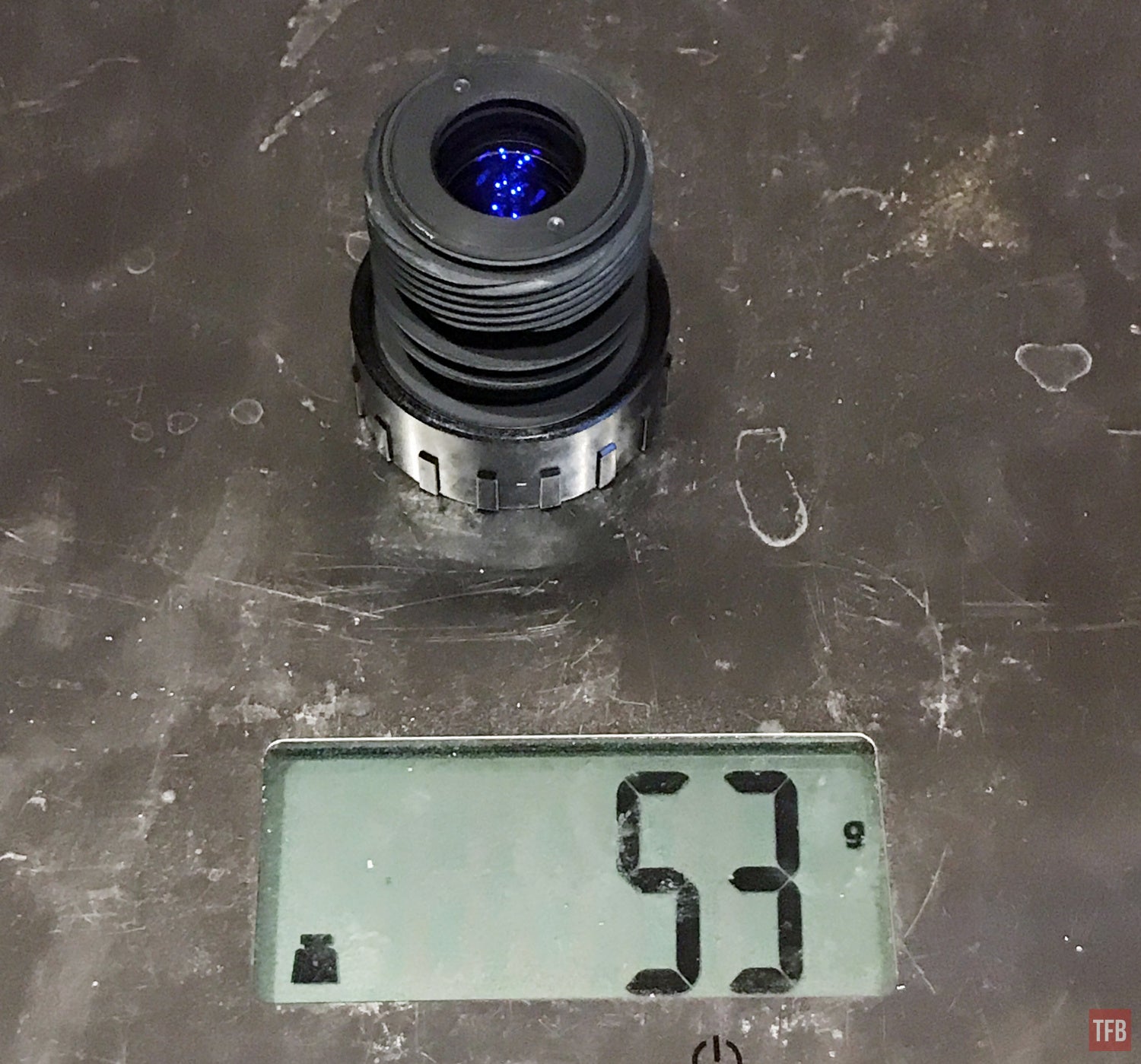
1.87 oz
The RPO objectives are noticeably shorter in length than regular PVS-14 objectives.


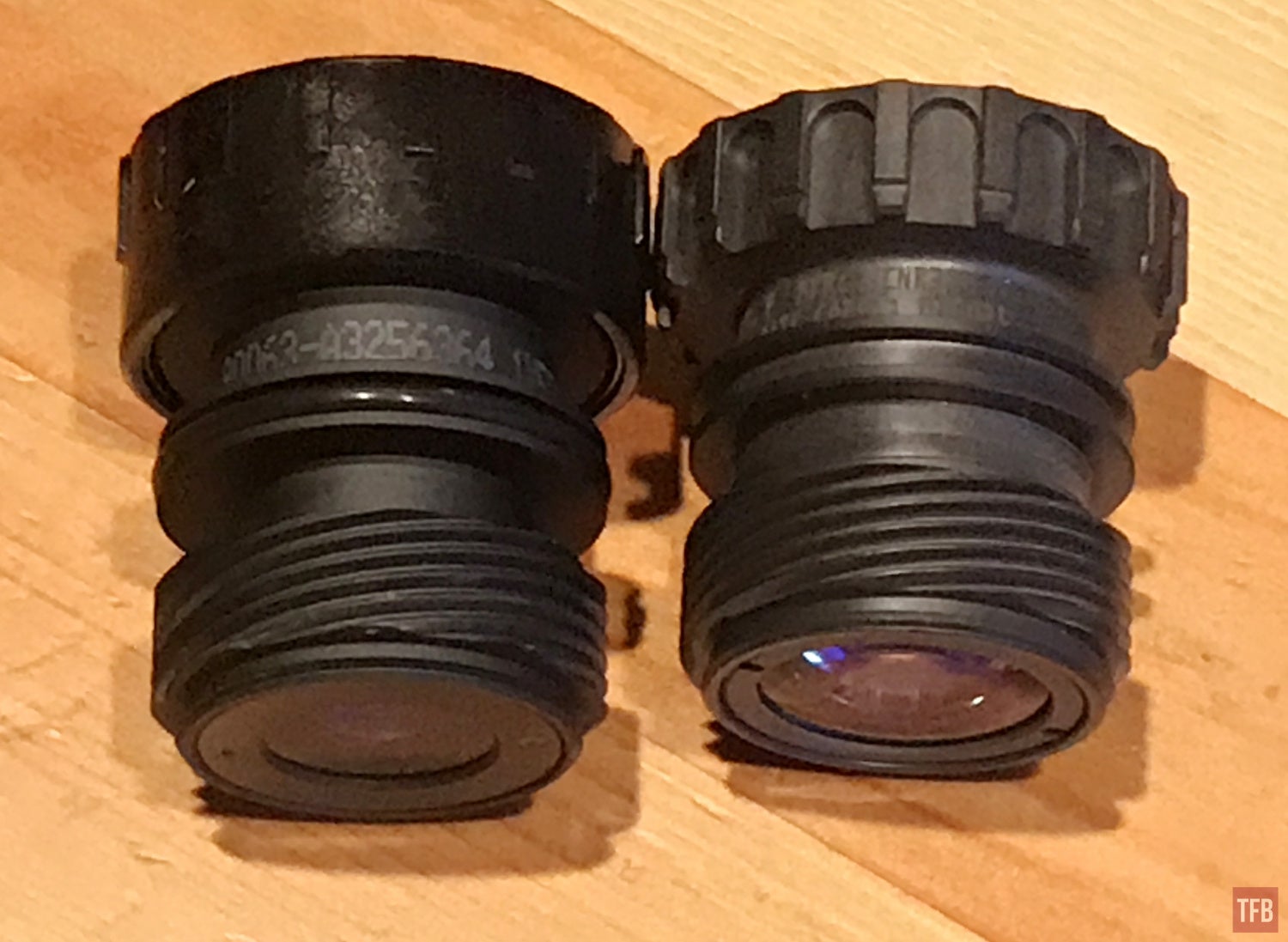
When you have a set on a dual tube binocular system you save 2.2 ounces.
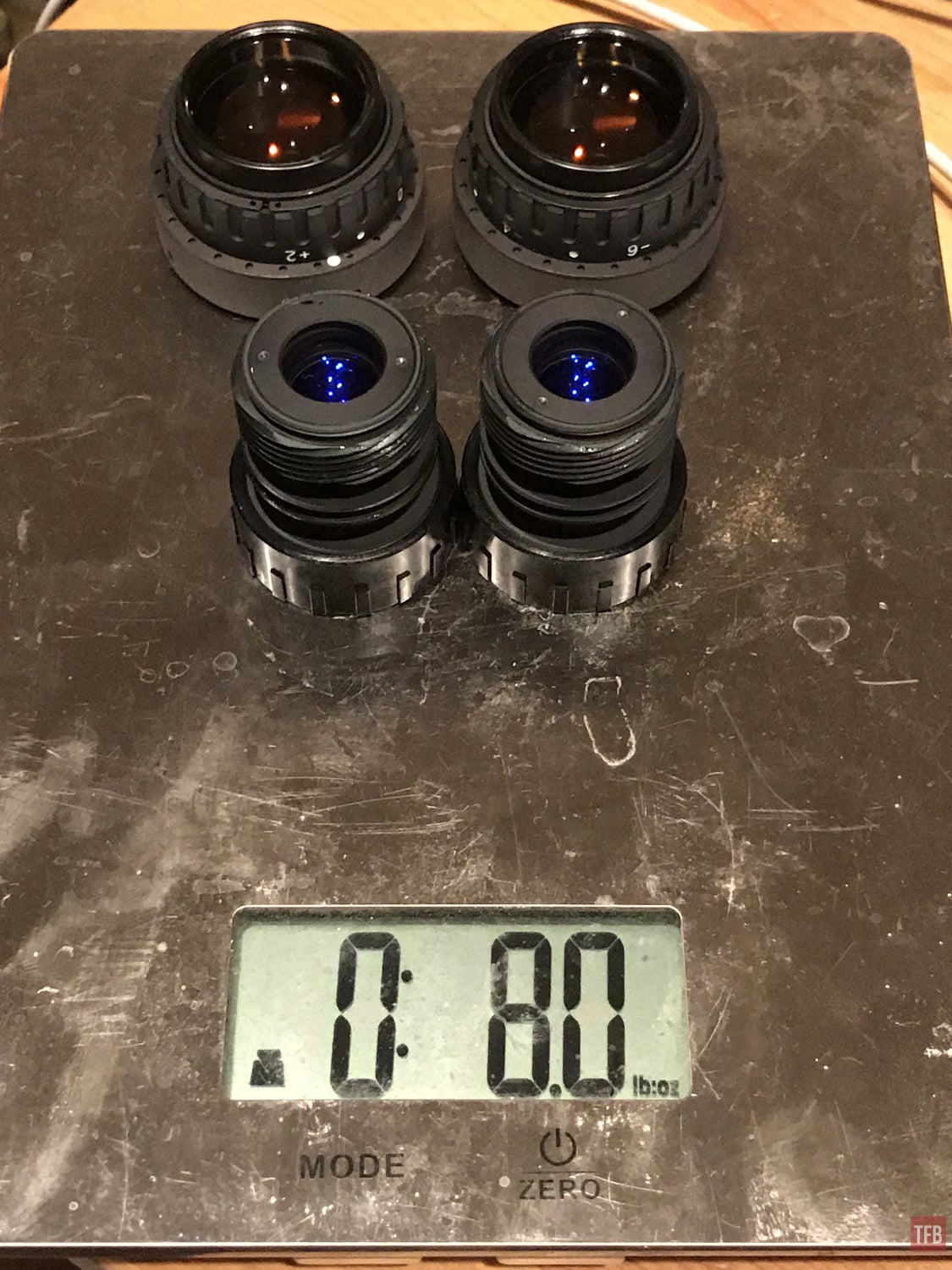

A built RNVG surprised me at saving weight with the RPO lenses. With an alkaline AA, the system weighs just 17.6 ounces. I could shave 0.3 ounces if I used a lithium AA battery.
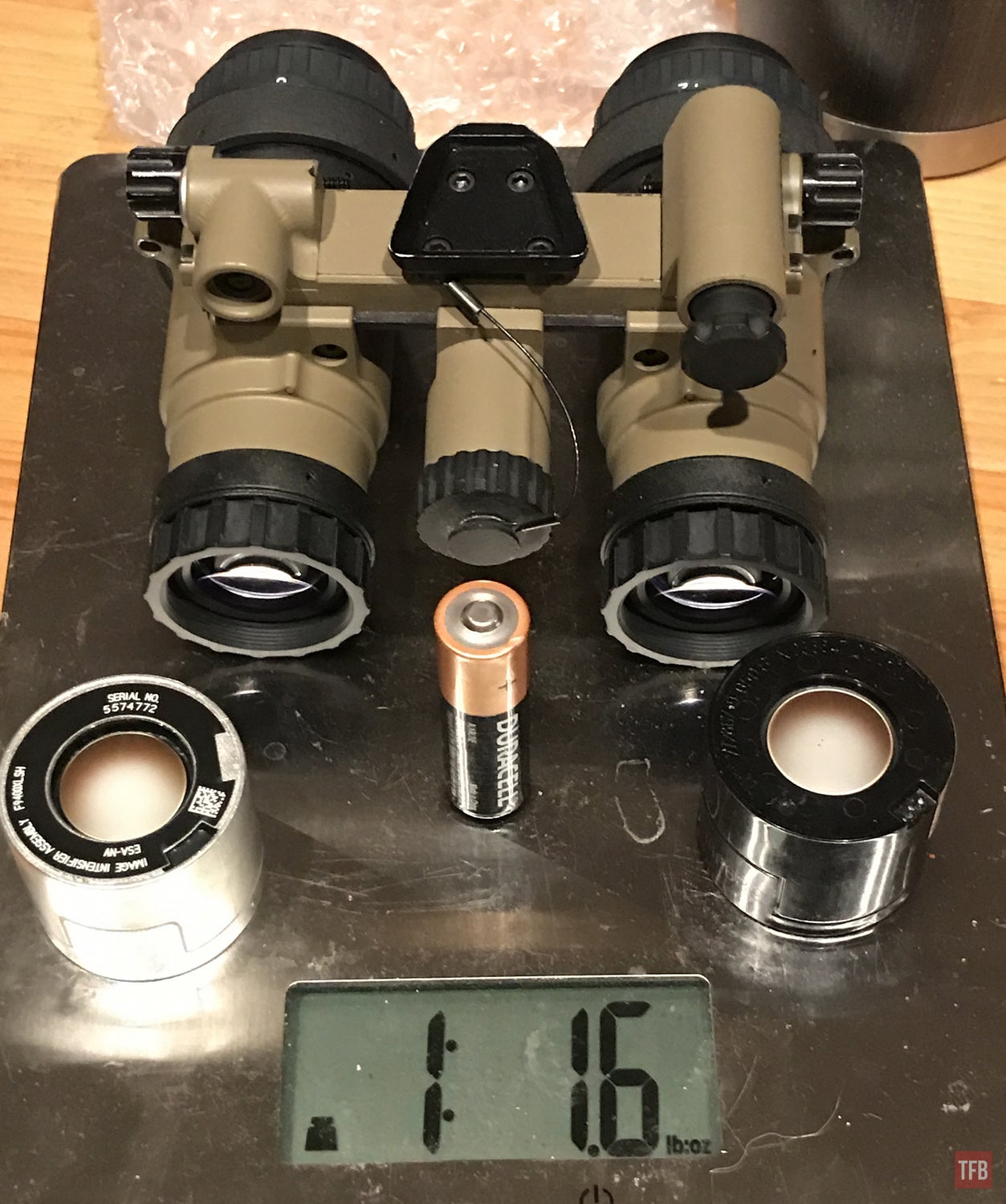
A BNVD-1431 weighs 18.4 ounces.

There are other issues though with the RPO lenses and it shows up more in white phosphor than green phosphor. In the video below, I tested both Photonis white phosphor and Elbit thin filmed white phosphor. I noticed light refraction more with white phosphor than green phosphor. The eyepiece acts sort of like a prism and projects a rainbow in the outer edges. When you use these eyepieces with green phosphor you still have the refracted light but since all the light is green, you don’t see the colorful rainbow, just a green reflection. Another issue is an increase in lens flare. While not as bad as the 50º FOV lenses in the AGM-50, it is noticeable. Now, these issues are not a factor of the image intensifier. It is the objective lens that is creating the lens flare and the eyepiece refracting the light coming out of the tube and into your eye.
Final Thoughts On Saving Weight
The RPO lenses certainly save weight on a night vision system compared to DEP Ether eyepieces. There are people and companies that claim it saves 30% weight. However, I have not seen that to be the case. There are some things that the DEP ether lens does save weight on and that is the eyepiece lock ring since you don’t use it when you install them on a housing. So if we take that into consideration you do save 12g. But that is just 0.4 ounces. Combine that with another eyepiece and you only save 0.8 ounces.

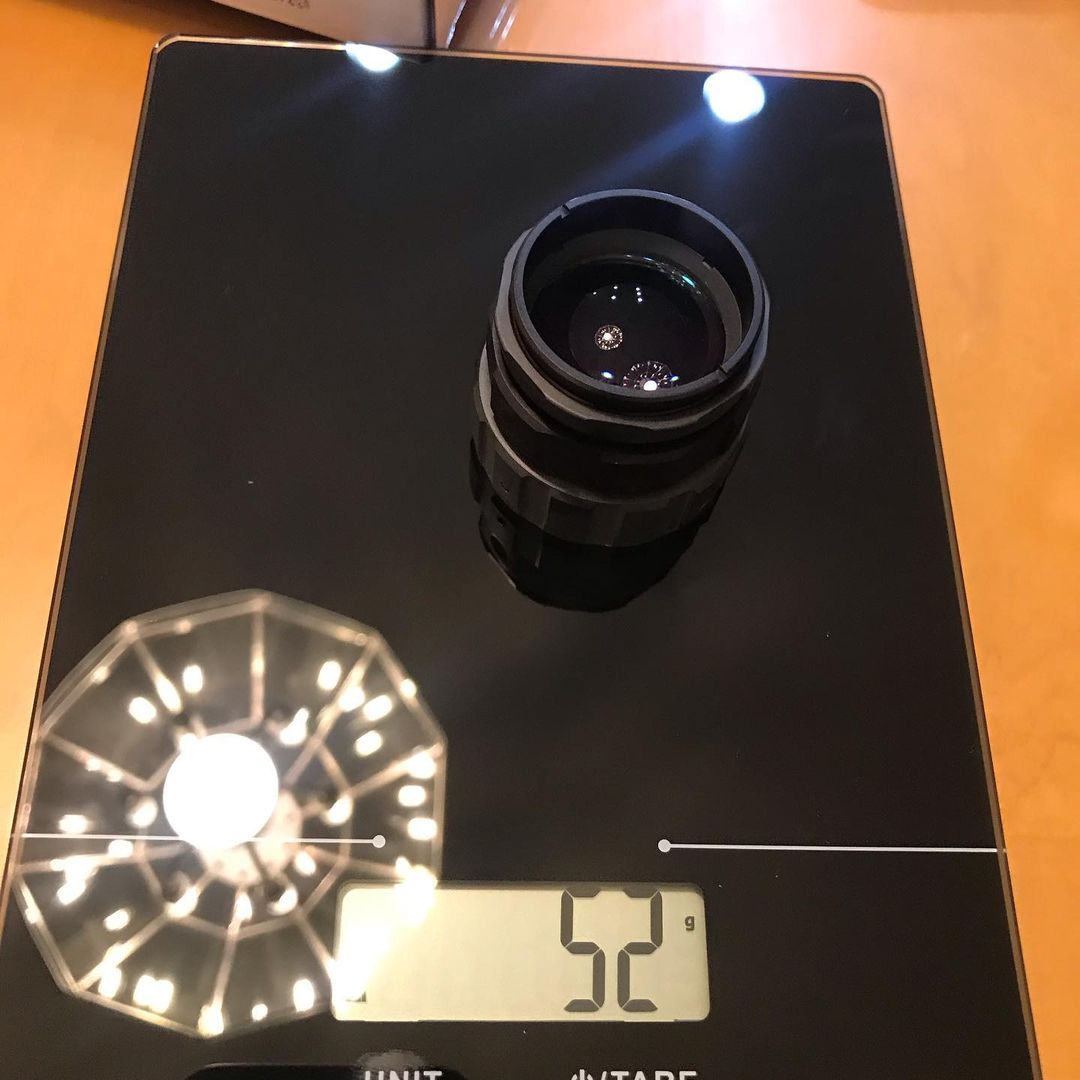
There is a little bit of weight due to the eyecup retaining rings.
Without the eyecup retaining rings, you save 1 ounce. Not remotely close to 30% weight savings. If I take the 12g saved that is only 23% the weight of the DEP Ether. So I do not see how they make the claim of 30%.


Another claim is a “large forgiving eyebox”. This is only a half truth. The eyecup retaining ring design does not encroach the eyepiece like the mil-spec eyepiece eyecup retaining ring. However, the solution to this is twofold. Either remove the eyecup retaining ring from your mil-spec eyepiece and the size is the same. See the image below.
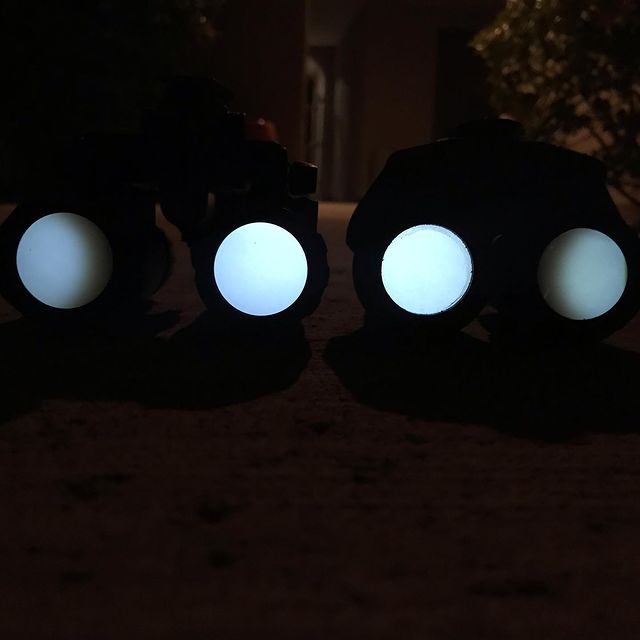
DEP either on the left, mil-spec eyepiece on the right without eyecup retaining rings
I have heard of claims that the DEP Ether glass is designed for white phosphor. I have not found this to be the case. Another concern about the DEP Ether lenses is the dipper adjustment. Regular eyepieces adjust the lens cell by translating them forwards and backwards without spinning them. Not the case with the DEP Ether glass. You have to spin the entire lens cell to move it forwards and backwards to adjust the diopter. This adversely affects your collimation. Then you have the cost. Just one DEP Ether eyepiece is $899! If you want two of them you have to spend $1698 just to save 1 ounce on your night vision goggles. That is not worth it. This makes the RPO lenses seem like a bargain in comparison.
But are the compromises worth saving weight? RPO lenses cost more than standard mil-spec glass and have greater lens flare and achromatic aberrations in the eyepiece. They don’t work as well with white phosphor as with green phosphor. You can fix the rainbow effect but simply moving your binos further from your eyes and the housing will crop out the rainbow reflections.
The 716 battery pack makes the 1431 pod one of the lightest weight night vision monoculars I have seen although run time is not great. If you want to chase after a few more ounces you can remove these four rings. Remove them from both sides of a bino and you save 0.8 ounces.
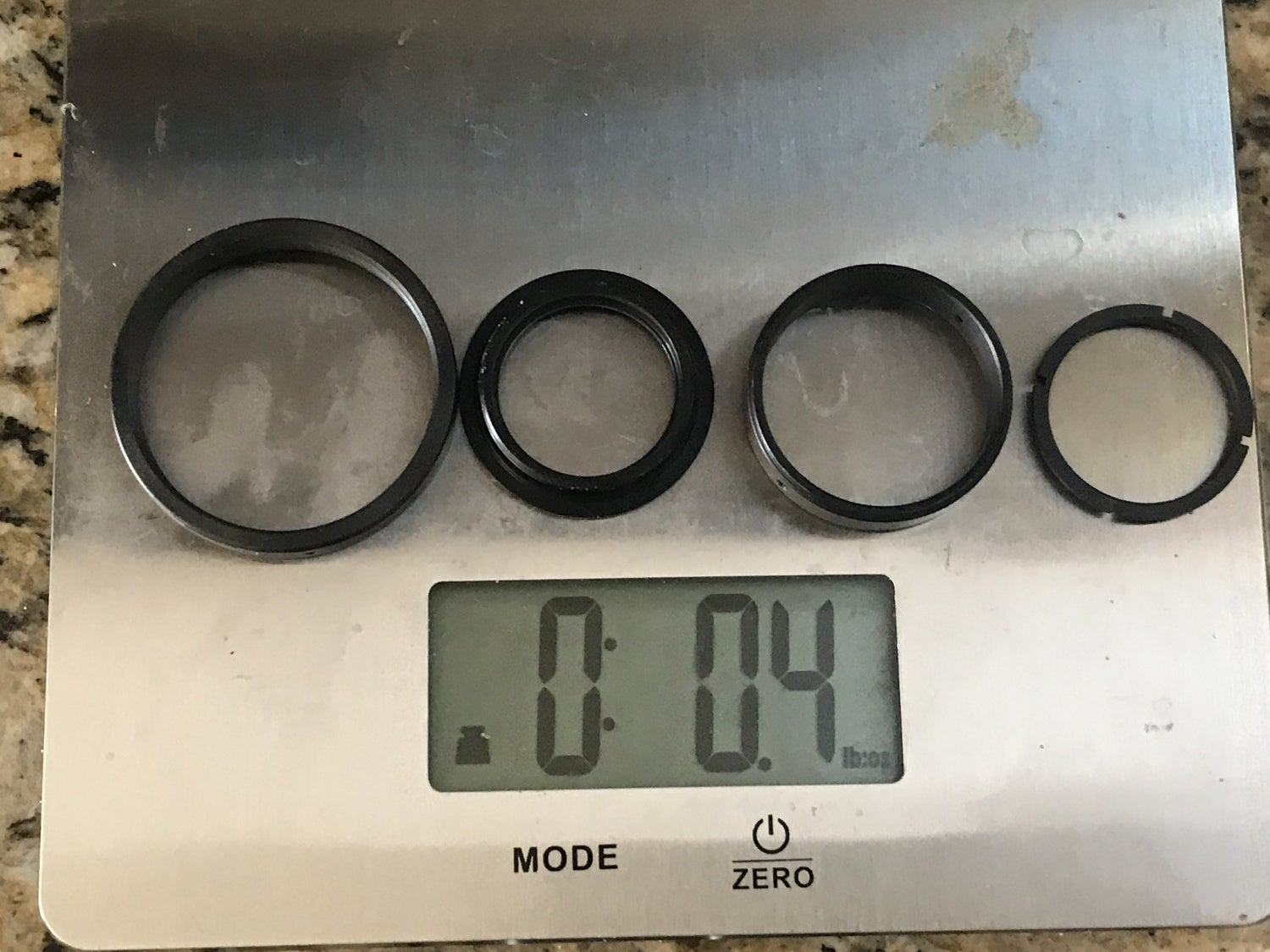
L-R: eyepiece lock ring, eyecup retaining ring, infinity stop, close focus stop
There are various retailers that will be carrying RPO lenses like Nocturn Industries and TNVC. No mention of retail pricing just yet. Also, I am not sure if they will sell these lenses separately or as part of a complete night vision system or maybe as an option for you to upgrade an existing night vision system that you bought from them.
 Your Privacy Choices
Your Privacy Choices

